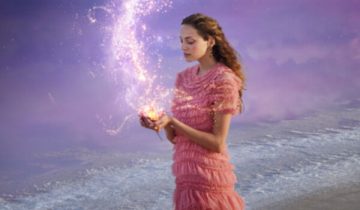Written by Priya Bhamra
Edited by CHIQIO
Keywords: Marrakech fragrance, Moroccan perfumes, exotic scents, floral notes, spice aromas
Meta description: Explore the captivating world of Marrakech’s perfumery, where traditional scents blend with modern creativity. Discover the vibrant aromas of spices, flowers, and the rich cultural heritage of this enchanting city.
Marrakech, Morocco, is a city that captivates the senses with its vibrant colours, bustling souks, and rich cultural heritage. As a British-Indian woman, it was a pleasure for me to travel to such a vibrant city exuding richness in culture and arts. Among its many charms, the city’s perfume industry stands out as a particularly enchanting aspect. Steeped in tradition and infused with modern creativity, the perfumes of Marrakech offer a fragrant journey that reflects the city’s unique blend of old and new.
A History of Fragrance
The art of perfumery in Marrakech has deep historical roots, dating back centuries to the time of the Berbers and Moors. The city’s strategic location along ancient trade routes brought an influx of aromatic materials from distant lands, such as frankincense from Arabia, myrrh from Ethiopia, and spices from India. These exotic ingredients became integral to Moroccan culture, used not only for their scents but also for their medicinal and spiritual properties.
Scents of the Souks
Walking through the souks of Marrakech, one is immediately enveloped by a symphony of scents. The air is thick with the aroma of spices, from the sweet warmth of cinnamon and vanilla to the fiery intensity of cumin and paprika. Vendors display pyramids of saffron, anise, and coriander, their vibrant colours matching the intensity of their fragrances. These spices are not only culinary staples but also essential components in many traditional Moroccan perfumes.
Argan oil, another Moroccan treasure, adds a subtle nutty smell to the mix. The kernels of the argan tree are native to Morocco. This oil is a key ingredient in both cooking and cosmetics. Its rich, earthy fragrance forms the base of many local perfumes, often blended with floral notes to create a balanced, multi-layered scent.
Floral Inspirations
Moroccan perfumery is heavily influenced by the country’s diverse flora. Roses from the Valley of Roses in the Atlas Mountains are particularly prized. Every spring, the valley is awash with pink blossoms, and the air is filled with their intoxicating scent. These roses are harvested and distilled into essential oils and rose water, key ingredients in many traditional Moroccan perfumes.
Orange blossom is another quintessential Moroccan scent. The city’s gardens and courtyards are often adorned with orange trees, their delicate white flowers exuding a sweet, citrusy aroma. Orange blossom water is a staple in Moroccan households, used in cooking, cosmetics, and perfumery.
Cultural Significance
In Marrakech, perfumes are more than just pleasant scents; they are woven into the fabric of daily life and cultural practices. Fragrance plays a significant role in religious rituals, with incense and scented oils used in mosques and during spiritual ceremonies. Traditional Moroccan hammams (bathhouses) also incorporate aromatic herbs and oils, creating a sensory experience that cleanses both body and soul.
Perfumes are a staple in Moroccan weddings and other celebrations. Brides are often anointed with fragrant oils and surrounded by the scent of flowers and spices, symbolising purity and blessing. The ritual of applying perfume is seen as an art form, passed down through generations, and is considered a vital part of one’s personal grooming and self-expression.
The Modern Perfumery Scene
While traditional perfumery remains a cornerstone of Marrakech’s fragrance industry, modern influences are increasingly evident. Contemporary Moroccan perfumers are blending ancient techniques with new ingredients and innovative approaches, creating scents that appeal to both local and international markets.
The Yves Saint Laurent Museum in Marrakech is a testament to this fusion of tradition and modernity. Yves Saint Laurent, the legendary fashion designer, was deeply inspired by Marrakech, where he owned a home and spent much of his time. The museum, located near the beautiful Majorelle Garden, showcases not only his fashion designs but also his love for Moroccan culture. The gardens, with their vibrant blue walls and lush greenery, are a sensory delight, often described as an oasis of tranquillity in the bustling city.
The influence of Saint Laurent and other designers who have fallen in love with Marrakech is evident in the city’s contemporary perfumery scene. Modern perfumers draw inspiration from the city’s eclectic mix of sights, sounds, and smells, creating scents that capture the essence of Marrakech. These perfumes often feature exotic blends, such as oud and saffron, alongside more familiar notes like rose and jasmine, reflecting the city’s unique cultural tapestry.
Culinary Connections
The connection between scent and taste is particularly strong in Marrakech, where the culinary and perfumery worlds often intersect. The same spices and herbs used in traditional dishes also find their way into perfumes, creating a sensory continuity that is distinctly Moroccan. The rich, aromatic tagines, flavoured with cumin, cinnamon, and preserved lemons, are mirrored in perfumes that evoke the warmth and complexity of Moroccan cuisine.
Mint tea, a staple of Moroccan hospitality, offers another example of this overlap. The fresh, invigorating scent of mint is both a refreshing drink and a popular note in perfumes, symbolising the hospitality and vibrancy of Moroccan culture.
Designing a Perfume for Marrakech
If I were to design a perfume for Marrakech, it would need to encapsulate the essence of the city — its history, culture, and sensory experiences. The fragrance would be a harmonious blend of traditional and modern notes, reflecting the city’s unique character.
Top Notes:
- Orange Blossom: Reflecting the ubiquitous orange trees in the city’s courtyards and gardens, this note offers a fresh, sweet citrus aroma that immediately evokes the vibrant atmosphere of Marrakech.
- Mint: Inspired by the ever-present mint tea, this note adds a refreshing and invigorating touch, symbolising Moroccan hospitality.
Middle Notes:
- Rose: The heart of the fragrance, rose represents the lush Valley of Roses. Its rich, floral scent is both intoxicating and romantic, capturing the beauty of Moroccan flora.
- Saffron: Adding a warm, spicy note, saffron is a nod to the colourful and aromatic spices found in Marrakech’s souks. It introduces an exotic, luxurious element to the perfume.
Base Notes:
- Argan Oil: Providing a rich, earthy foundation, argan oil ties the fragrance to its Moroccan roots. Its nutty aroma adds depth and complexity.
- Oud: A traditional ingredient in Middle Eastern perfumery, oud imparts a deep, woody scent that enhances the perfume’s longevity and richness. It reflects the blend of ancient traditions and modern luxury that characterises Marrakech.
This perfume would be a tribute to Marrakech, capturing its vibrant culture, aromatic cuisine, and stunning natural beauty. It was one of my favourite places to travel too, due to its courageous arts and beautiful landscapes. The scent would evoke the sensory journey one experiences while exploring the city, from the bustling souks to the serene gardens, and everything in between.
Photo Sources



 No products in the cart.
No products in the cart.